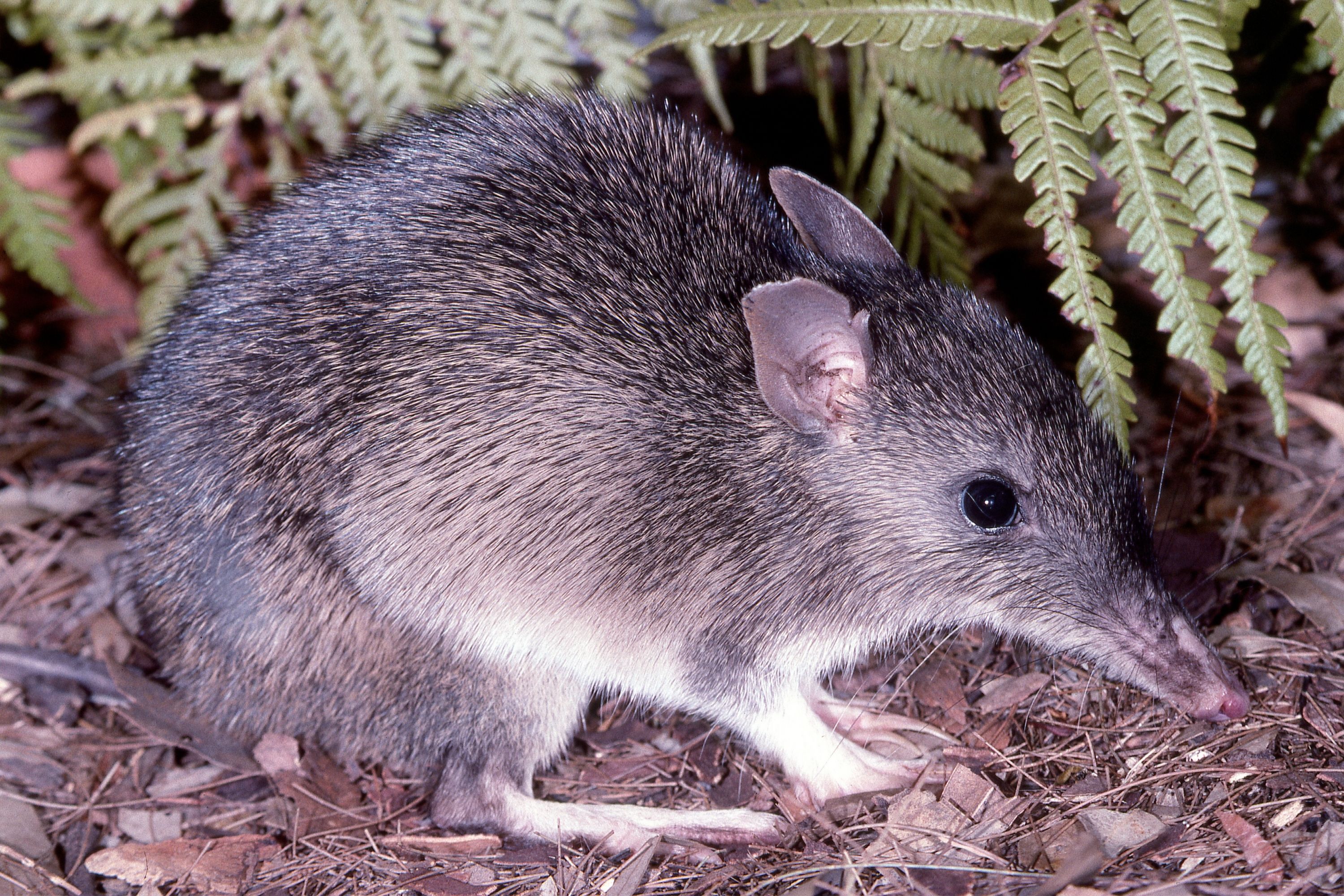Long-nosed bandicoot
(Perameles nasuta)

Description
The long-nosed bandicoot (Perameles nasuta), a marsupial, is a species of bandicoot found in eastern Australia, from north Queensland along the east coast to Victoria. Around 40 centimetres (16 in) long, it is sandy- or grey-brown with a long snouty nose. Omnivorous, it forages for invertebrates, fungi and plants at night. French naturalist Étienne Louis Geoffroy described the long-nosed bandicoot in 1804. Swiss naturalist Heinrich Rudolf Schinz described a large specimen from near Bathurst in the Blue Mountains as a new species, Perameles lawson, in 1825, though the specimen was lost at sea in shipwreck. French naturalist Pierre Boitard described Isoodon musei in 1841, both are now classified as P. nasuta. Two subspecies are recognised: P. nasuta subspecies nasuta is found from western Victoria through eastern New South Wales and north to central Queensland, and P. nasuta subspecies pallescens, found from central Queensland through to the Cape York Peninsula. The long-nosed bandicoot is the largest member of its genus, which also includes the eastern barred bandicoot and the western barred bandicoot. It is most closely related to the eastern barred bandicoot, the two species having diverged from one another in the late Pliocene. Their ancestors diverged from the ancestor of the western barred bandicoot in the Miocene. The long-nosed bandicoot is much less colourful than its relatives, being primarily a sandy-brown or greyish colour. It is nocturnal, non-climbing, solitary, and omnivorous. Its body length is around 40 centimetres (16 in), including a tail length of 14 centimetres (5.5 in), and it weighs 1.5 kilograms (3.3 lb). It has a very prominent long nose and small pointed upright ears, a hunched-looking posture, a short tail, a rear-facing pouch, and three long, clawed toes on front feet. The excreta are 3.5 centimetres (1.4 in) long by 1 centimetre (0.39 in) wide. The long-nosed bandicoot has a high-pitched squeak when disturbed. The species is distributed along the eastern coast of Australia from Cape York Peninsula in Queensland to New South Wales and Victoria. It is found in rainforest, moist gullies and grassy woodlands. Long-nosed bandicoots benefit from a mosaic of mixed habitats, including open grassy areas (such as lawns in urban areas) that they forage in at night-time and sheltered areas with undergrowth that they retreat to and nest in.
Taxonomic tree:







